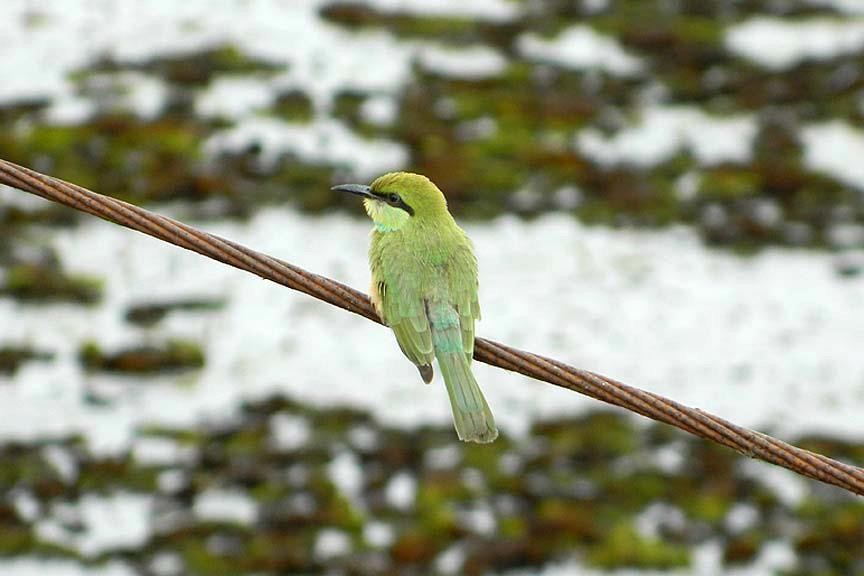Little Green Bee-eater
A species of Typical Bee-eaters, Also known as Green Bee-eater Scientific name : Merops orientalis Genus : Typical Bee-eaters
Little Green Bee-eater, A species of Typical Bee-eaters
Also known as:
Green Bee-eater
Botanical name: Merops orientalis
Genus: Typical Bee-eaters
Content
Description People often ask General Info
Description
The entire plumage is bright green and tinged with blue especially on the chin and throat. The crown and upper back are tinged with golden rufous. The flight feathers are rufous washed with green and tipped with blackish. A fine black line runs in front of and behind the eye. The iris is crimson and the bill is black while the legs are dark grey. The feet are weak with the three toes joined at the base. The wings are green and the beak is black. The sexes are not visually distinguishable. 
Size
20 - 25 cm
Life Expectancy
12-18 years
Nest Placement
Burrow
Feeding Habits
Little Green Bee-eater primarily preys on a variety of insects, including bees, beetles, termites, and dragonflies. These birds demonstrate aerial hunting techniques to catch prey mid-flight, often from a perch. Notably, little Green Bee-eater has an inclination for Hymenoptera species, showcasing a specialized diet.
Habitat
The little Green Bee-eater thrives in open or lightly wooded terrain, including agricultural lands and disturbed regions. Adaptable to various habitats, little Green Bee-eaters are found in semi-desert areas and often perches low, utilizing fences and wires. Not as water-dependent as some relatives, they frequent plains and coastal sandy zones above the high-tide line. Geographically, they inhabit broad regions from sea level to about 2,800 meters but predominantly below 1,500 meters in the Indian Subcontinent and up to 1,600 meters in Southeast Asia, favoring low dry country especially below 300 meters in Sri Lanka.
Dite type
Insectivorous
People often ask
General Info
Feeding Habits
Bird food type
Bird Feeder Type

Platform
Behavior
Migration is not known but they make seasonal movements in response to rainfall. These birds are somewhat sluggish in the mornings and may be found huddled next to each other on wires sometimes with their bills tucked in their backs well after sunrise. They sand-bathe more frequently than other bee-eater species and will sometimes bathe in water by dipping into water in flight. They are usually seen in small groups and often roost communally in large numbers (200-300). 
Distribution Area
In Africa and Arabia it is found in arid areas, but is more diverse in its habitats further east. They are resident in the lowlands of South Asia but some populations move seasonally but the patterns are not clear, moving away to drier regions in the rainy season and to warmer regions in winter. In parts of Pakistan, they are summer visitors. 
Species Status
Not globally threatened.
Scientific Classification
Phylum
Chordates Class
Birds Family
Bee-eaters Genus
Typical Bee-eaters Species
Little Green Bee-eater 